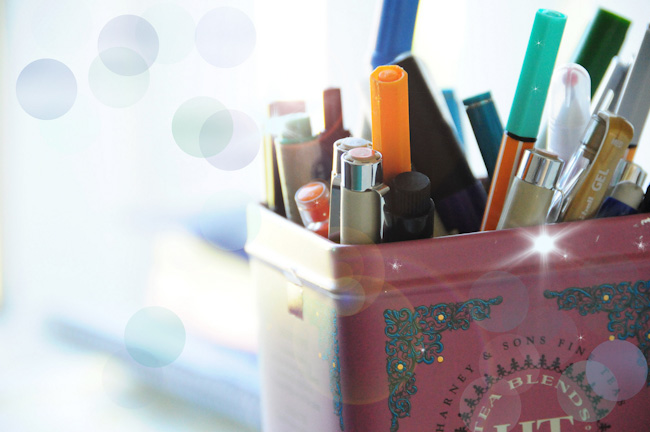Your email list is gold. When your readers trust you with their email, you want to honor that trust with a newsletter they’ll eagerly open, read, and enjoy; and not quickly delete.
Imagine…
Jane, your newsletter subscriber, quickly scans her inbox. She’s glad to see an email from you, and your clever, engaging subject line piques her interest. She eagerly opens it. She smiles at your witty remarks, downloads the free gift you included, and clicks through to your website.
Does this sound like a dream? You can make this dream come true by crafting the ideal newsletter for your readers.
Essential Elements of Effective Newsletters
Every email newsletter needs to…
Make Them Open It
The most awesome newsletter is worthless if it’s never opened. Use your best copywriting skills to make your headline irresistible. Take time to write a subject line that grabs the reader and makes her curious enough to open it.
And don’t forget the first words that will appear next to the subject. These can help lure people in or make their eyes glaze over. Make sure it’s the former.
Be Personal
No, I’m not talking about sharing your personal problems or what you had for breakfast. But do come across as a real person. You can start with a friendly letter to the reader, and sign your name. You can also include your photo.
Be Entertaining
Make your readers happy. Definitely don’t bore them or worse, annoy them. How, you say? Be yourself. Write well. Inspire them. Use humor. Use powerful, relevant images. If you can make them laugh, or even cry, you’ve done well.
Be Easy to Read
People get thousands of emails, and nobody wants to stare at a giant block of text trying to figure out what it says, or squint because the text is so small or so gray, or be overwhelmed with a page full of visual clutter. Please, use whitespace. Use bullet points and lists. Less is more.
Be Useful
Give, and you shall receive. When you focus on helping your reader, he will come back for more. He will share it on social media. He will tell his friends. He will like you and want to pay you money.
Be Consistent
Send your newsletter regularly: Either monthly, bi-weekly, or weekly. Put it on your calendar and keep your commitment. Don’t overwhelm or annoy your readers with constant emails. On the flip side, make sure to communicate often enough not to fade from their memory.
Also, be consistent in your branding. Your newsletter should be representative of your overall brand. If you include graphics and images, they should be consistent with those on your website.
Be Simple
Include in your newsletter exactly what it takes to meet your goals, nothing more. Every element in your email should be there for a reason. We all have enough clutter in our inboxes. Don’t let your email, or any part of it, be viewed as clutter.
Be Professional
Proofread. Use spellcheck! Double check your grammar. You should have zero errors in your emails. Read it aloud to help you catch mistakes. If you need to, have somebody else check your email before you send it out. Or sleep on it, and then read it again.
Be Easy to Create
Use a standard format. You can create your own format or use a template. When you do it the same way each time, it will make your life easier. A consistent format also makes it easier on the reader.
Lead Them Where You Want Them
Make them curious. Have them click over to your blog by not posting the entire article. If you post the whole thing, there is less incentive for them to click through.
Now that you’ve thought about the characteristics of good newsletters, you’re ready, right?
Wrong.
Before you jump in, there are a couple of key questions to consider:
What are your goals?
and
How can you best achieve them?
Know Your Goals
The first step in writing a great newsletter is to be clear on what you’re trying to achieve. Here are some possible newsletter goals:
- Keep you and your business on their mind
You want your readers to remember who you are and what you have to offer.
- Build trust
Regular emails show that you’re still going to be there. You are real and reliable, and you will consistently provide quality content to enhance their lives.
- Cultivate a relationship
The more personal nature of an email allows your readers to get to know you better. To know your readers better, ask questions and encourage them to reply directly to your email.
- Increase engagement on your blog, on social media, or via email
There are many ways to do this such as a simple link to your latest blog post, social share buttons, links to specific posts on social media, or an invitation to forward the email.
- Promote your products and services
Let your readers know about your latest offerings and encourage them to buy.
- Give gifts and build reciprocity
Email newsletters provide an easy way for you to give back to your community of readers. Make them feel special by giving them exclusive content, such as e-books, posters, worksheets, handy guides, helpful tips, or links to useful or interesting content. If they feel that you give them value, they’ll be more likely to give back to you later.
- Test ideas before going public
Have an idea that you’re not quite ready to share with the world? Try out your ideas with all or just part of your email list.
- Inform
Need to communicate quickly, such as changes to your affiliate program, sales, or other important information? You may need to send a separate email, but when possible, include this in your regular email newsletter to keep the number of emails to a minimum.
Your goal may be simply to lead them to your website or blog so that you can achieve your goals there.
Do Your Own Research
A great way to get a feel for what you’d like to do with your own newsletter is to do some research. Look no further than your own inbox.
First, scan your email inbox.
Are there any subject lines and initial words that catch your eye? Do any make you want to open and read them right now? Make a note of which ones you want to open and which are easily overlooked. What made you want to open the enticing ones?
Next, open and read them.
What appeals to you? What turns you off? Make note of elements you might like to include in yours and what you want to avoid.
Examples of Effective Newsletters
Meagan Francis
Blogger Meagan Francis of The Happiest Home uses different newsletter styles depending on which segment of her list she is targeting and type of content.
This is an example of her every-other-month newsletter. It is a traditional style newsletter which uses a template. She starts with a header image, a short personal note addressed to the reader, and a series of images with blurbs of recent blog posts, podcasts, or videos, and corresponding links.
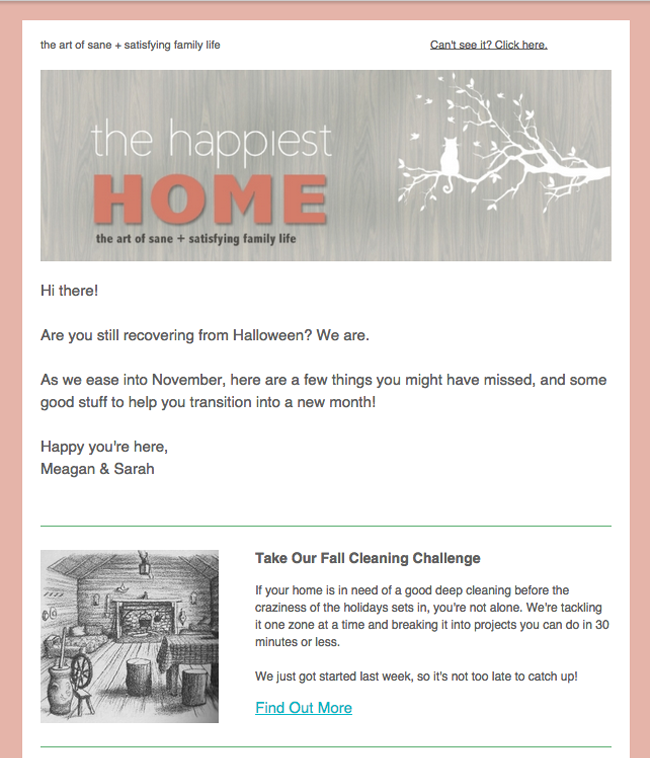
She also includes “More Good Stuff,” with links to older posts, and then an extra section that varies in content.
In this newsletter she recognizes new subscribers by name. Sometimes she includes a link to a freebie or an invitation to connect on social media.
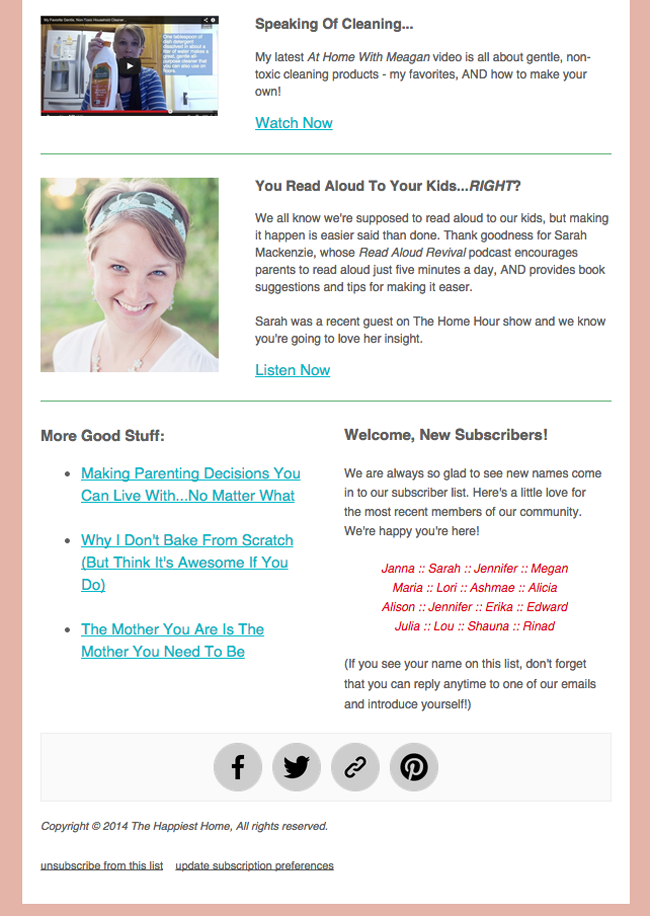
Meagan encourages engagement by asking readers to respond directly to the email, and her friendly personality comes through.
The pleasant design is easy to read, and it’s a good length, not too long, but long enough.
Leonie Dawson
Leonie’s personality shines through in her newsletters. They are colorful and creative, with her own hand drawn graphics.
Her blog newsletter reads like a personal letter from a friend, written in her unique style, which is fun, affectionate, and irreverent. The personalized header includes her photo, art, and signature.
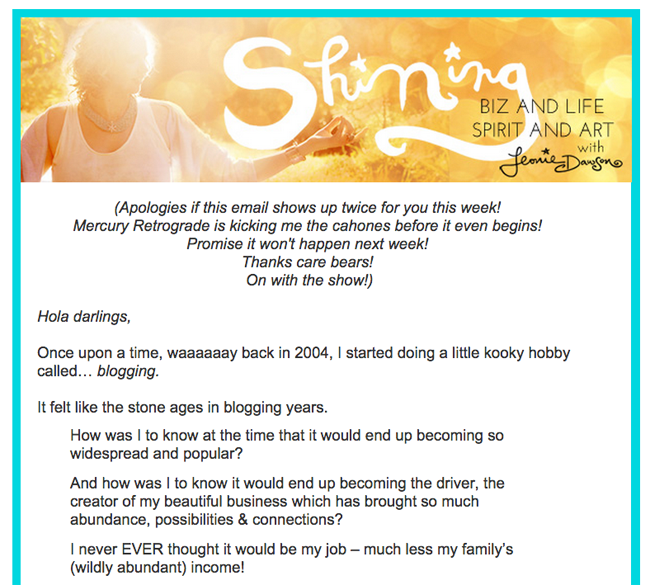
She uses ample whitespace, bolding, and bullets to make it easy to read.
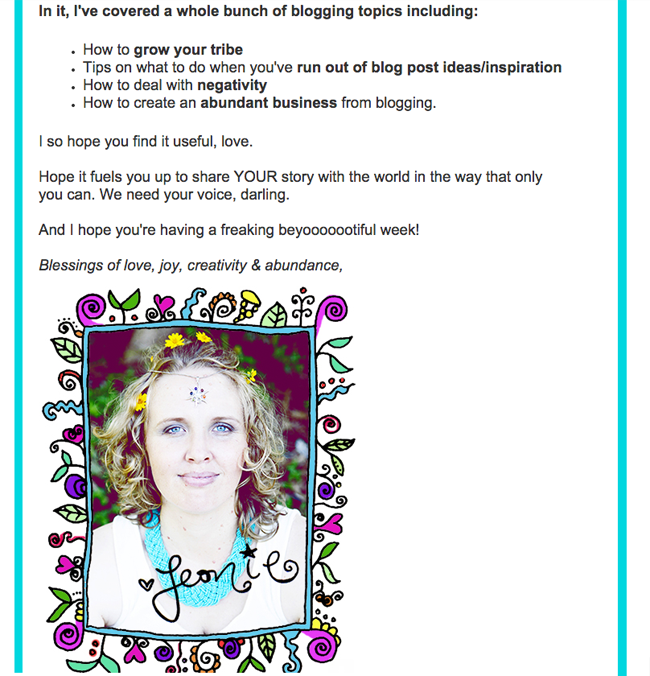
She includes a description and link to her recent blog post, hand drawn social connect buttons, and a graphic with link to the landing page for her membership site.
She closes her letter with warm encouragement and a photo of her smiling face.
Amy Lynn Andrews
Amy’s newsletter, aptly called a Useletter, is organized as a list of useful tips. She uses a clean, appealing, easy-to-read design.
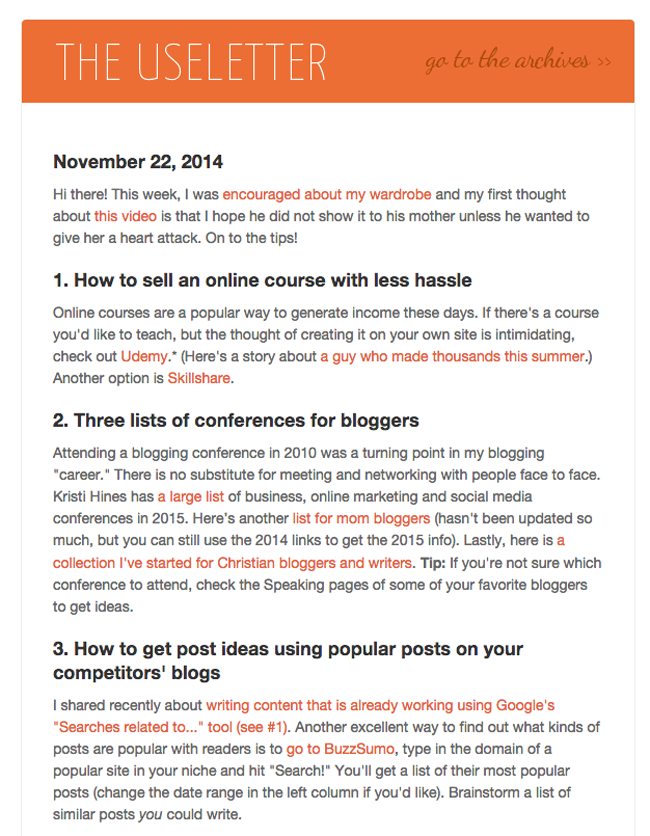
With a simple branded image at the top, her list of helpful tips includes affiliate links, links to her blog, and links to other helpful or interesting sites.
She also has many links to her posts on different social media accounts, such as Facebook, Pinterest, and Instagram.
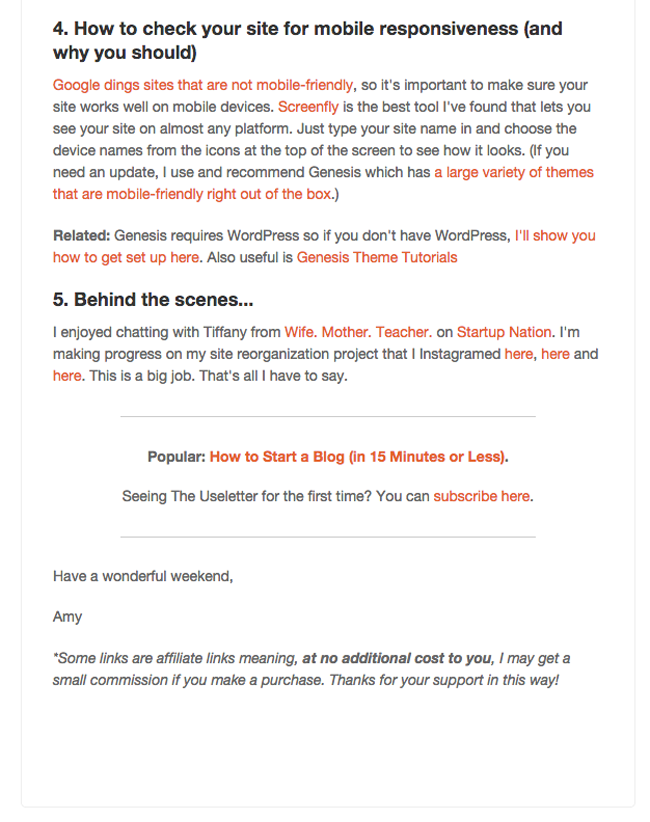
Amy ends with a link to a popular post, an invitation to subscribe, and a friendly closing.
These newsletters are different, yet they are all effective newsletters for their readers.
- With strong branding and a personal tone, they clearly represent their authors
- They are easy to read
- They provide helpful, entertaining content
- They lead the reader to their websites and social media
Craft YOUR Newsletter
You’ve done your research. You’ve been inspired. Now it’s time to get to work on your newsletter!
Here are some items you may want to include. Remember to include only those that help you meet your goals. Keep it as simple as possible.
- A personal greeting
- A note or letter
- A photo of you
- Exclusive content not available elsewhere
- Excerpts of content from your blog or website
- Behind the scenes info about your business
- Branding elements
- Relevant, appealing images
- Social share buttons
- Links to your posts on social media
- Links to your products, services, or programs
- Links to past posts
- Link to your latest video
- Link to your latest podcast
- Request for feedback
- A clear call to action
- A gift
- Affiliate links that are helpful, relevant, and appealing
- Ads/sponsors
Do What Works Best
When you run a business, it doesn’t make sense to just do “whatever” and hope for the best.
You want to create the most effective newsletter, one that meets your goals.
How do you know if what you’re doing is working?
Look at your numbers.
Three numbers to track are subscribers, open rate, and click-throughs.
Through split testing, you can track which variables yield the highest open rate and click throughs.
Mailchimp, Aweber, and other email providers make it easy to test different variables.
- Which subject lines are best?
- Which format do your readers prefer?
- Is short or long better?
- Which types of content do your readers like best?
By varying one aspect at a time in a split test, you can find out exactly what your readers prefer.
What works best for you is not what works for someone else. You need to find out what works best for you and your people.
Write Your Perfect Newsletter
Think about the basics, think about your goals, and do your own research.
Include exactly what you need and no more.
And test, test, test! to find out what works.
It’s time to work smarter, and create your ideal newsletter.


